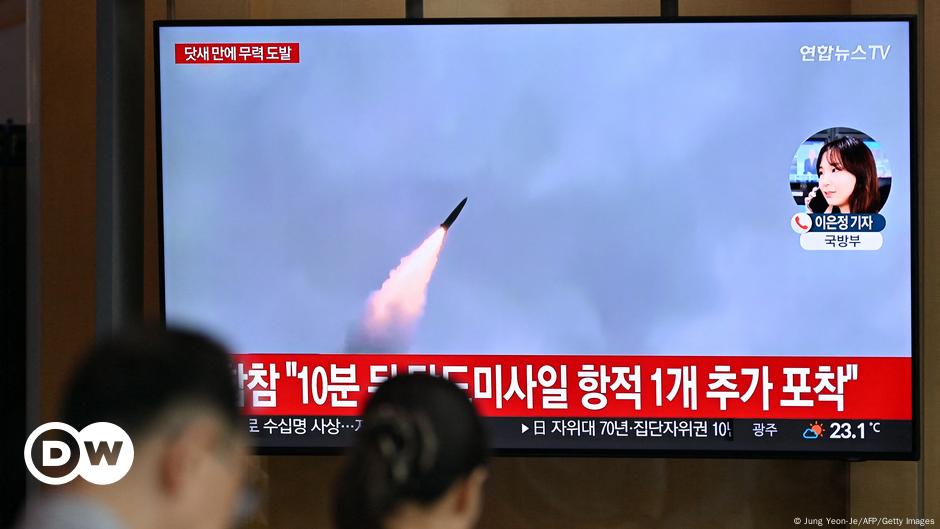On July 1, 2024, North Korea test-fired two ballistic missiles in a northeastward direction from the town of Jangyon in southeastern North Korea. This incident follows closely after the conclusion of a trilateral military drill involving South Korea, the United States and Japan.

Also Read: Series of Suicide Attacks in Nigeria Kills 18 and 19 Injured
North Korea launched two missiles at 5:05 a.m. and 5:15 a.m. local time. The first missile traveled 600 kilometers (373 miles), while the second covered only 120 kilometers (75 miles).
South Korea’s Joint Chiefs of Staff (JCS) said that the second missile exhibited an “abnormal” flight trajectory early on. The possibility of an explosion was considered, leading to debris falling inland.
The first missile was identified as a short-range ballistic missile. The exact classification of the second missile was not confirmed, raising speculation that it might be a new type of weapon.
The missiles were launched from Changyon-gun in South Hwanghae province approximately 130 kilometers (81 miles) southwest of Pyongyang.
The first missile traveled approximately 600 kilometers (370 miles), reaching the waters off North Korea’s eastern city of Chongjin.
The second missile only covered 120 kilometers (75 miles) and exhibited abnormal flight behavior possibly failing and scattering debris inland.
The South Korean Joint Chiefs of Staff indicated that the second missile experienced issues during its initial flight stage.
It is speculated that the missile exploded mid-flight, which would explain the short flight distance and the debris falling on North Korean territory.
The South Korean military condemned the launches as a serious threat to regional peace and stability.
South Korea, the United States and Japan shared information regarding the missile launches to strengthen surveillance and preparedness.
The missile tests occurred shortly after the completion of the “Freedom Edge” drills, a three-day military exercise involving South Korea, the United States and Japan.
These drills aimed to enhance joint capabilities in ballistic missile defense, anti-submarine warfare and other military domains. The exercises included participation from an aircraft carrier, destroyers, fighter jets and helicopters.
Also Read: Maldives: 2 Ministers Arrested Over Alleged Black Magic on President
North Korea’s Foreign Ministry strongly condemned the drills likening the trilateral partnership to an “Asian NATO” and accusing it of destabilizing the region and threatening North Korean sovereignty.
The nation had conducted another missile test five days prior claiming it successfully tested a multi-warhead missile.
South Korea disputed this claim suggesting the missile had failed mid-flight. Recent provocations included sending balloons with trash towards South Korea, a response to South Korean activists’ balloon campaigns delivering political leaflets into the North.
North Korea’s relationship with Russia has strengthened with the two countries agreeing to mutual defense assistance.
If the second missile exploded after a 120-kilometer flight, debris could have landed near Pyongyang, a city with over 3 million residents. No confirmed reports of damage were noted by South Korea’s JCS.
A failed launch can indicate either technical failures or experimental trials of new technology. It also showcases the risks associated with missile testing near populated areas.
North Korea claimed a successful test of a multiple warhead missile recently which South Korea disputed citing a mid-air explosion during the test. The failed test could be an attempt to validate or further develop new missile technology.
The missile tests followed military exercises by South Korea, Japan and the United States, named “Freedom Edge.” North Korea condemned these exercises as aggressive likening them to an Asian NATO.
The Korean Peninsula remains a hotspot with no formal peace treaty signed since the Korean War armistice in 1953.
Relations between the Koreas are strained with North Korea’s increasing missile tests and South Korea’s military alliances with the U.S. and Japan.
Also Read: Julian Assange Returns to Australia After 12 Years of Legal Battles





















